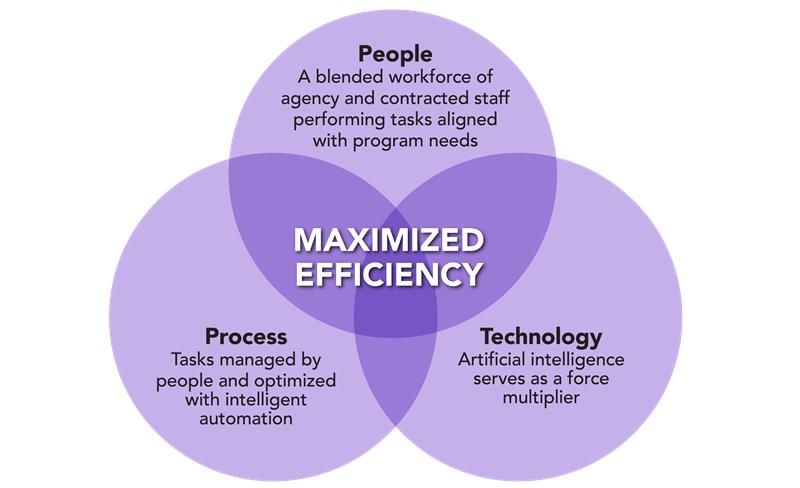States today face unprecedented fiscal pressures, rising public demands, and persistent staffing shortages. Hiring more staff isn’t enough to keep pace with these escalating challenges.
Streamlined program operations require a holistic view of how people (tasks performed by a blended workforce), processes (tasks managed by people and optimized with intelligent automation), and technology (artificial intelligence as a force multiplier) can drive greater efficiency.
Blending workforces
A blended workforce model of contracted and agency staff increases program agility, injects new skills, and expands capacity without permanently increasing long-term labor costs. With faster recruitment, hiring, and training, contracted teams can be rapidly deployed to cover the most pressing program needs.
Teams and skill sets align with program needs. Contracted staff can cover more administrative tasks, like application processing and customer service. Agency staff can focus on consistently applying policies and procedures across the program and providing program and contractor oversight.




